Shrubby St. John’s-wort
- October 18, 2023
- 0 comment
Shrubby St. John’s-wort, scientifically known as Hypericum prolificum, is a charming and resilient shrub that is native to various regions of North America. This woody perennial plant is a member of the Hypericaceae family and is distinguished by its slender, arching branches, and bright yellow, star-shaped flowers with prominent stamens.

It typically grows to a height of 2 to 4 feet, making it a prominent feature in many natural landscapes. The name “St. John’s-wort” refers to the plant’s historical use as a remedy for various ailments, particularly the flowering tops, which are often associated with herbal medicine.

Beyond its potential medicinal properties, Shrubby St. John’s-wort provides ecological benefits by serving as a valuable food source for pollinators, such as bees and butterflies, and its berries are consumed by wildlife. Gardeners and enthusiasts appreciate this hardy shrub for its ornamental value, adaptability to a range of soil types, and its capacity to thrive in diverse environmental conditions. In summary, Shrubby St. John’s-wort is not only a beautiful addition to natural habitats but also a plant with a rich history of traditional uses and ecological significance.
| Characteristics | Description |
| Scientific Name | Hypericum prolificum |
| Common Name | Shrubby St. John’s-wort |
| Family | Hypericaceae |
| Plant Type | Woody Perennial Shrub |
| Mature Height | 2 to 4 feet (approximately 0.6 to 1.2 meters) |
| Flower Characteristics | Bright yellow, star-shaped flowers with prominent stamens |
| Native Range | Various regions of North America |
| Ecological Role | Provides nectar and pollen for pollinators, and its berries are a food source for wildlife |
| Historical Use | The flowering tops have been used in herbal medicine |
| Adaptability | Thrives in diverse soil types and environmental conditions |
| Ornamental Value | Popular in gardens and landscapes for its visual appeal |
| Longevity | Perennial, meaning it can live for several years if well-maintained |
| Maintenance | Low-maintenance once established |
| Hardiness Zones | Typically suited for zones 4 to 9, depending on the variety |
| Blooming Period | Late spring to early summer |
| Attracts | Bees, butterflies, and other pollinators |
| Berries | Red to black in color and are consumed by birds and small mammals |
| Foliage | Opposite leaves, often dotted with small translucent glands |
| Additional Notes | Some varieties of Shrubby St. John’s-wort may have specific growing requirements, so it’s important to choose the right one for your location. |
Botanical Beauty of “Shrubby St. John’s-wort”
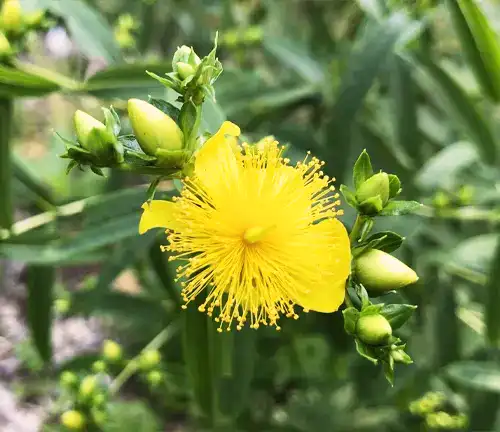
Shrubby St. John’s-wort, the unassuming yet captivating native plant of North America, has been capturing the hearts of nature enthusiasts and gardeners alike. Its botanical beauty is a testament to the wonders of the natural world. This charming woody perennial, scientifically known as Hypericum prolificum, boasts slender, arching branches adorned with vibrant, star-shaped yellow flowers that seem to beckon the sun. The delicate petals and prominent stamens make it a true standout in the plant kingdom, earning it a place of honor in gardens and natural landscapes.
Woodland Elegance
As you venture into woodlands and open spaces, you might stumble upon the elegant Shrubby St. John’s-wort. With a mature height ranging from 2 to 4 feet, this woody shrub gracefully mingles with the surrounding flora. Its slender branches sway in the breeze, creating a serene and picturesque scene. Whether as a solitary sentinel or part of a larger group, it exudes an understated elegance that harmonizes with the environment, making it a favorite among landscape designers.
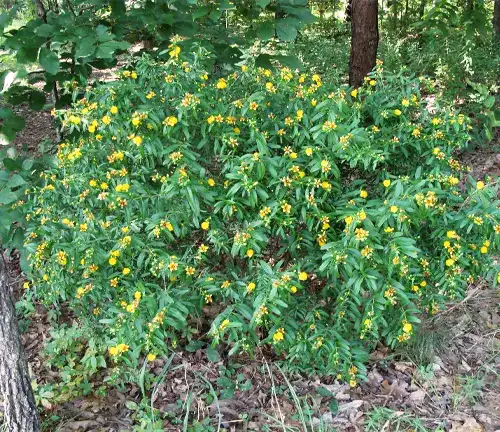
Ecological Importance
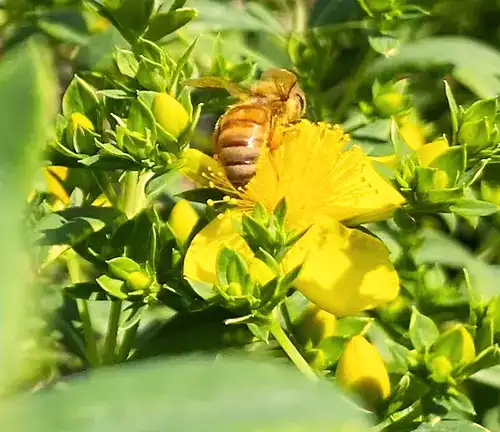

Beyond its aesthetic allure, Shrubby St. John’s-wort holds a vital role in our ecosystem. It plays a crucial part in sustaining biodiversity. The bright blooms provide nectar and pollen, attracting an array of pollinators, from industrious bees to graceful butterflies. The red to black berries that follow the flowering season are a sought-after food source for birds and small mammals. In this way, the shrub supports the delicate balance of nature, emphasizing its ecological significance.
Cultivation and Conservation
Cultivating Shrubby St. John’s-wort is a rewarding endeavor, as it is adaptable to various soil types and can thrive in diverse environmental conditions. Its hardiness zones, typically ranging from 4 to 9, make it suitable for a wide geographic range. However, conservation efforts are essential to protect its native populations, as habitat loss and invasive species pose challenges. Gardeners and horticulturists are encouraged to consider native varieties to support biodiversity and maintain its ecological role.
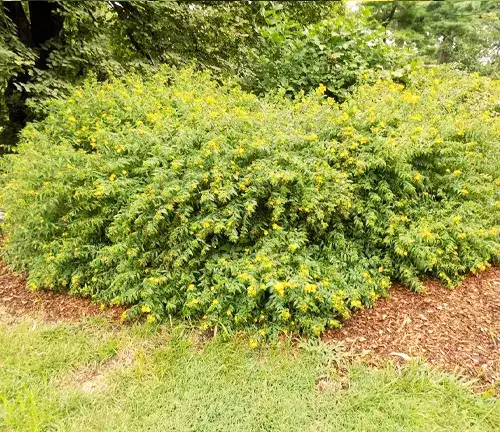
Fragrance
One of the subtle yet delightful aspects of this plant is its fragrance. When you approach a cluster of Shrubby St. John’s-wort in full bloom, you might notice a sweet, herbal scent wafting through the air. This fragrant aura adds another layer of appeal, making it a sensory delight in the garden and the wild.
Soil Stabilization
The extensive root system of Shrubby St. John’s-wort not only anchors it firmly in the ground but also contributes to soil stabilization. This makes it an excellent choice for erosion control along riverbanks and slopes. Its role in preventing soil erosion ensures the long-term health of natural habitats.
Common Uses
Throughout history, the flowering tops of this plant have been used for their potential medicinal properties. It has been associated with traditional herbal remedies, particularly in addressing various ailments. However, it’s important to exercise caution and consult with experts when considering any medicinal applications.
Benefits
The benefits of embracing Shrubby St. John’s-wort extend beyond its ornamental and ecological value. It enriches our lives by connecting us to the natural world and offering an opportunity to support local biodiversity. Whether you’re a gardener, a conservationist, or simply an admirer of botanical beauty, this plant holds the promise of enriching your experience of the natural world while contributing to the health of our environment.
Different Species
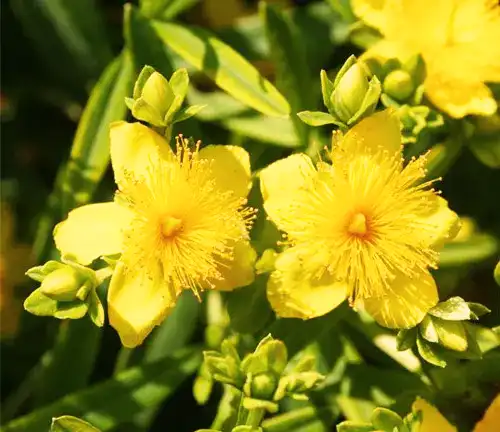
Hypericum kalmianum
(Kalm’s St. John’s-wort)
This species is known for its bright yellow flowers and compact, mounding growth habit. It’s a popular ornamental shrub in gardens and landscapes.
Hypericum frondosum
(Golden St. John’s-wort)
Similar in appearance to Hypericum kalmianum, this species is also cultivated for its showy yellow flowers. It’s prized for its aesthetic appeal and low maintenance requirements.
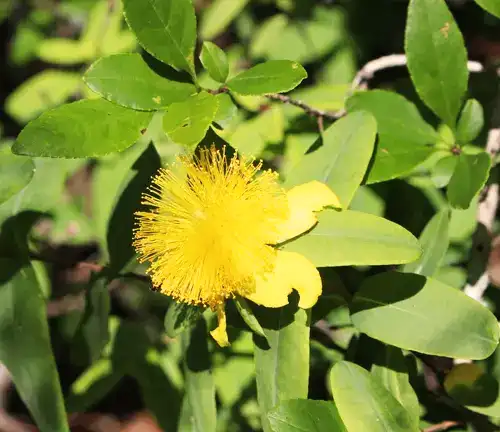

Hypericum androsaemum
(Tutsan or Sweet Amber)
Although not native to North America, this European species is known for its reddish stems and distinctive black or red berries. It has both ornamental and medicinal uses.
Hypericum perforatum
(Common St. John’s-wort)
While not a shrub like the previous species, this is one of the most well-known members of the Hypericum genus. It’s an herbaceous perennial with yellow flowers and has been historically used for its potential medicinal properties.


Hypericum prolificum var. sinuatum
(Sinuate-leaved St. John’s-wort)
This variety of Shrubby St. John’s-wort is known for its unique, sinuate or wavy-edged leaves. It is a distinctive variation of the native species.
Hypericum pyramidatum
(Great St. John’s-wort)
Native to Europe and Asia, this species is notable for its large, pyramid-shaped clusters of bright yellow flowers. It has been introduced and naturalized in parts of North America.
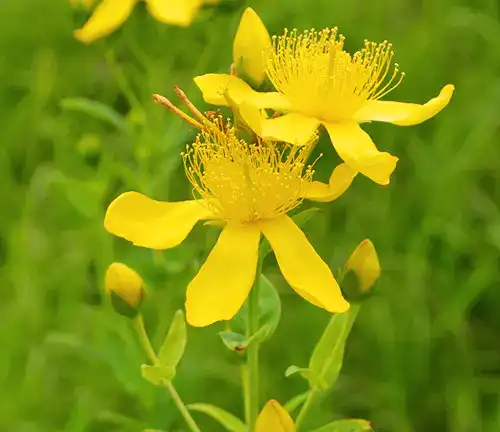
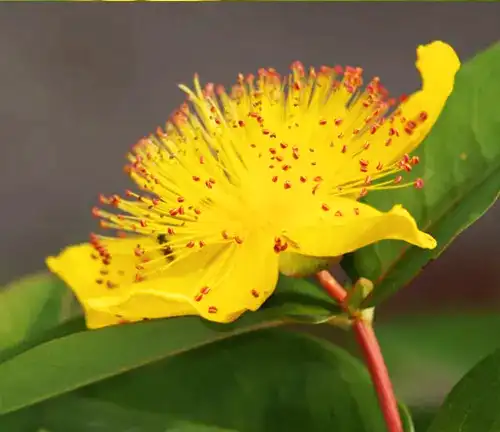
Hypericum calycinum
(Rose-of-Sharon St. John’s-wort)
This species is a ground cover with striking bright yellow flowers and is often used in landscaping for its ability to form a dense mat of greenery.
Frequently Asked Questions (FAQs)
- What is Shrubby St. John’s-wort?
Shrubby St. John’s-wort (Hypericum prolificum) is a native North American woody perennial shrub known for its slender branches and bright yellow, star-shaped flowers. - How tall does Shrubby St. John’s-wort typically grow?
It usually reaches a height of 2 to 4 feet (0.6 to 1.2 meters) when mature. - What is its ecological importance?
Shrubby St. John’s-wort provides nectar and pollen for pollinators and its berries are a food source for birds and small mammals, making it ecologically significant. - Can I grow Shrubby St. John’s-wort in my garden?
Yes, it is a popular choice for gardens and landscapes due to its ornamental value and adaptability to different soil types. - What are its soil and climate requirements?
It is adaptable to a range of soil types and can thrive in diverse environmental conditions. The hardiness zones typically range from 4 to 9, depending on the variety. - Does Shrubby St. John’s-wort have a fragrance?
Yes, the plant emits a sweet, herbal fragrance when in full bloom, adding to its appeal. - How does it contribute to soil stabilization?
Its extensive root system helps prevent soil erosion, making it suitable for use in erosion control on riverbanks and slopes. - Are there different species of Shrubby St. John’s-wort?
Yes, there are various species and varieties within the Hypericum genus, including Hypericum kalmianum and Hypericum frondosum. - What are some common uses of Shrubby St. John’s-wort?
Historically, its flowering tops have been used in herbal medicine. However, it’s important to exercise caution and seek expert advice for any medicinal applications. - How can I support the conservation of Shrubby St. John’s-wort and its habitat?
Choose native varieties in your garden, participate in local conservation efforts, and help protect natural habitats from habitat loss and invasive species. - What are the benefits of cultivating Shrubby St. John’s-wort?
Cultivating this plant enriches your connection to the natural world, supports local biodiversity, and contributes to the health of the environment.


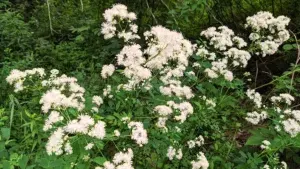
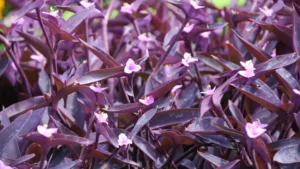
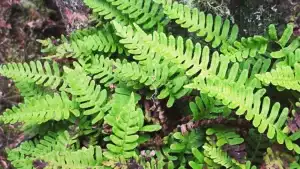
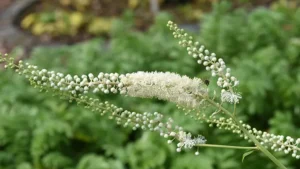

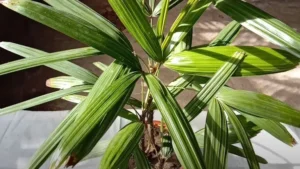

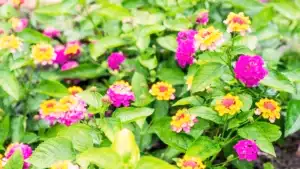
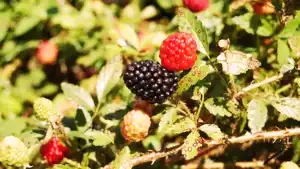
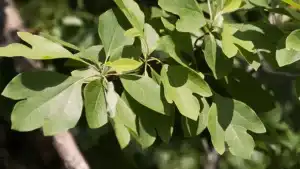
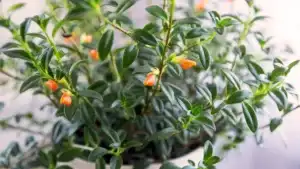
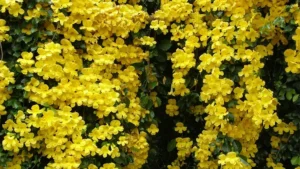
Leave your comment